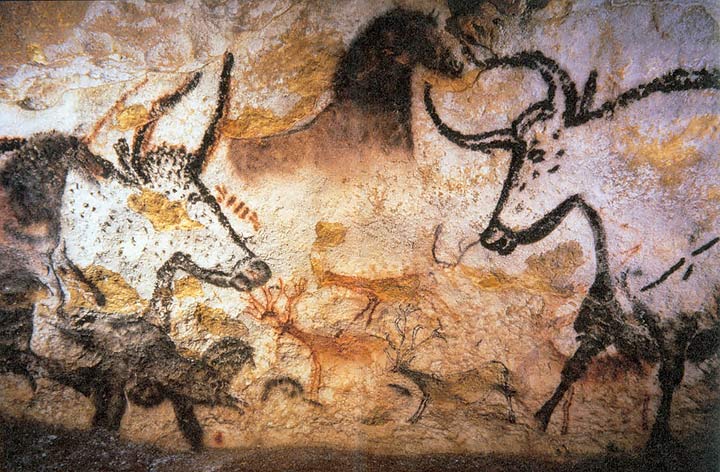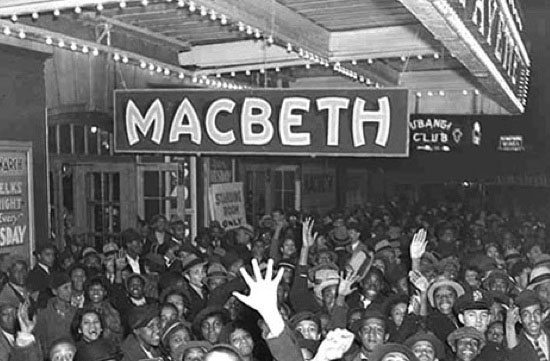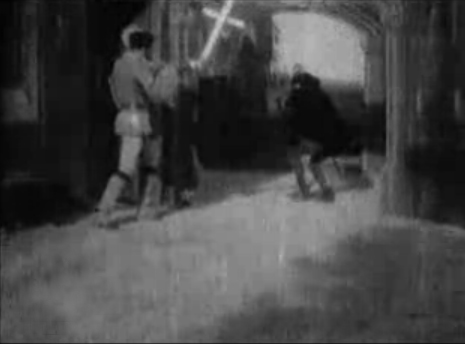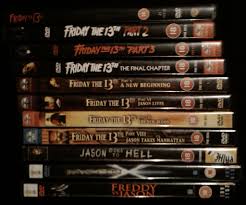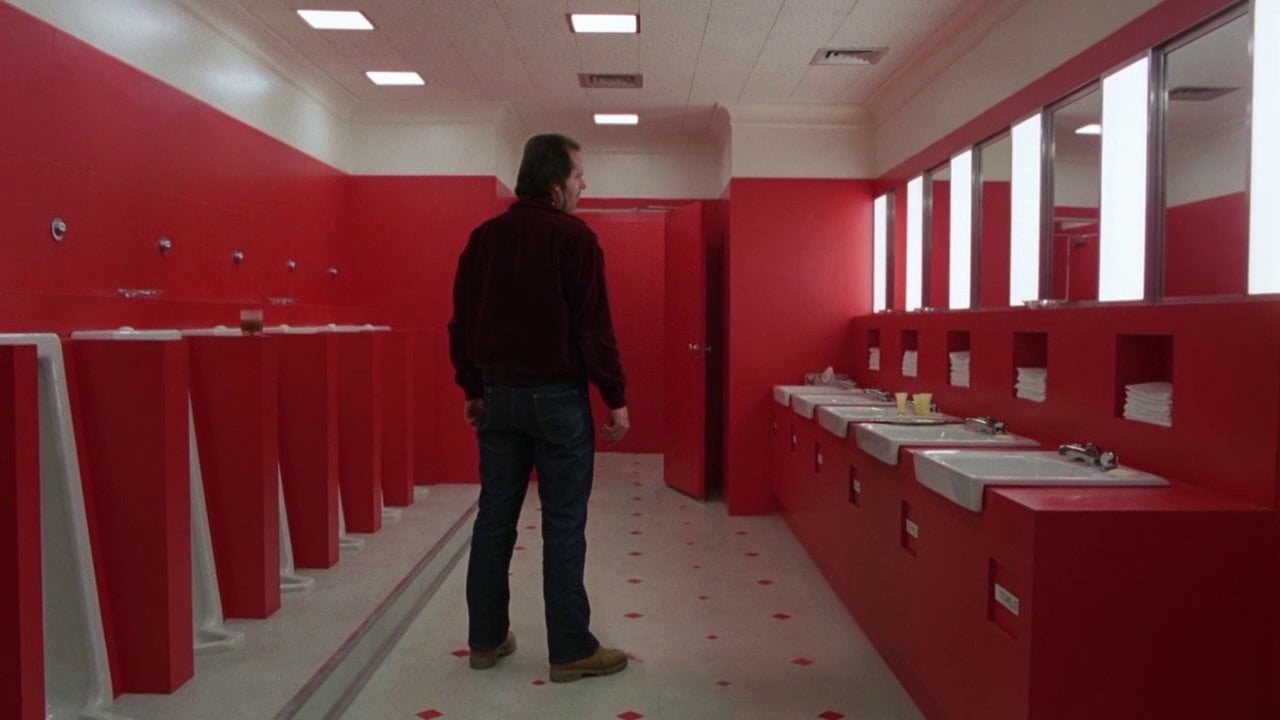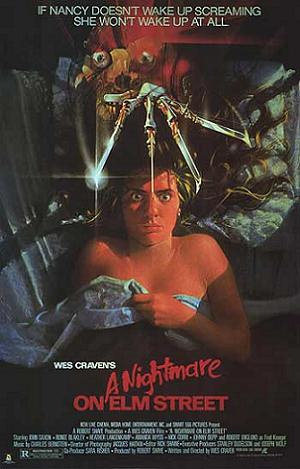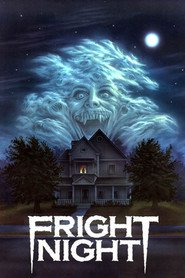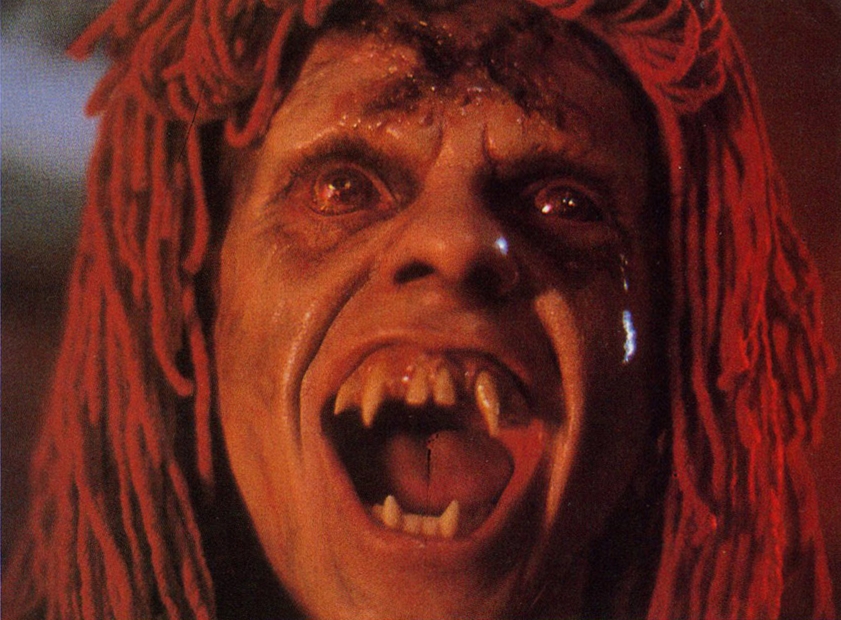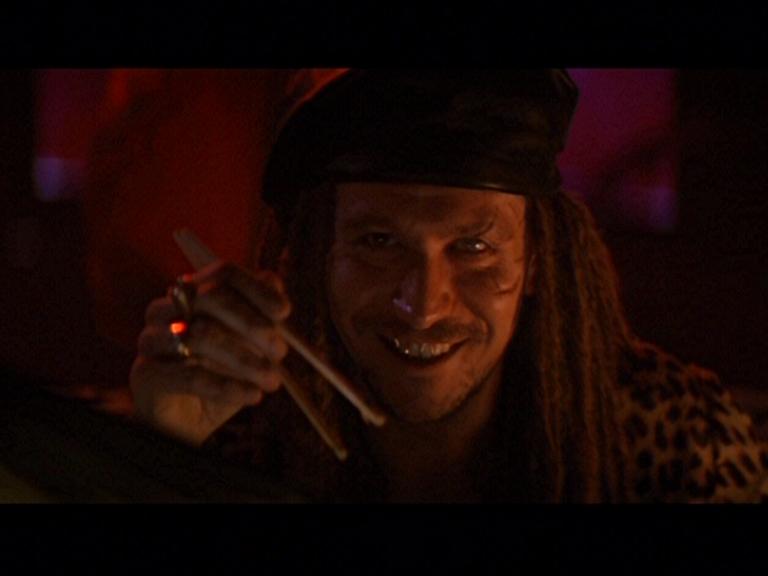Hair-um Scarum
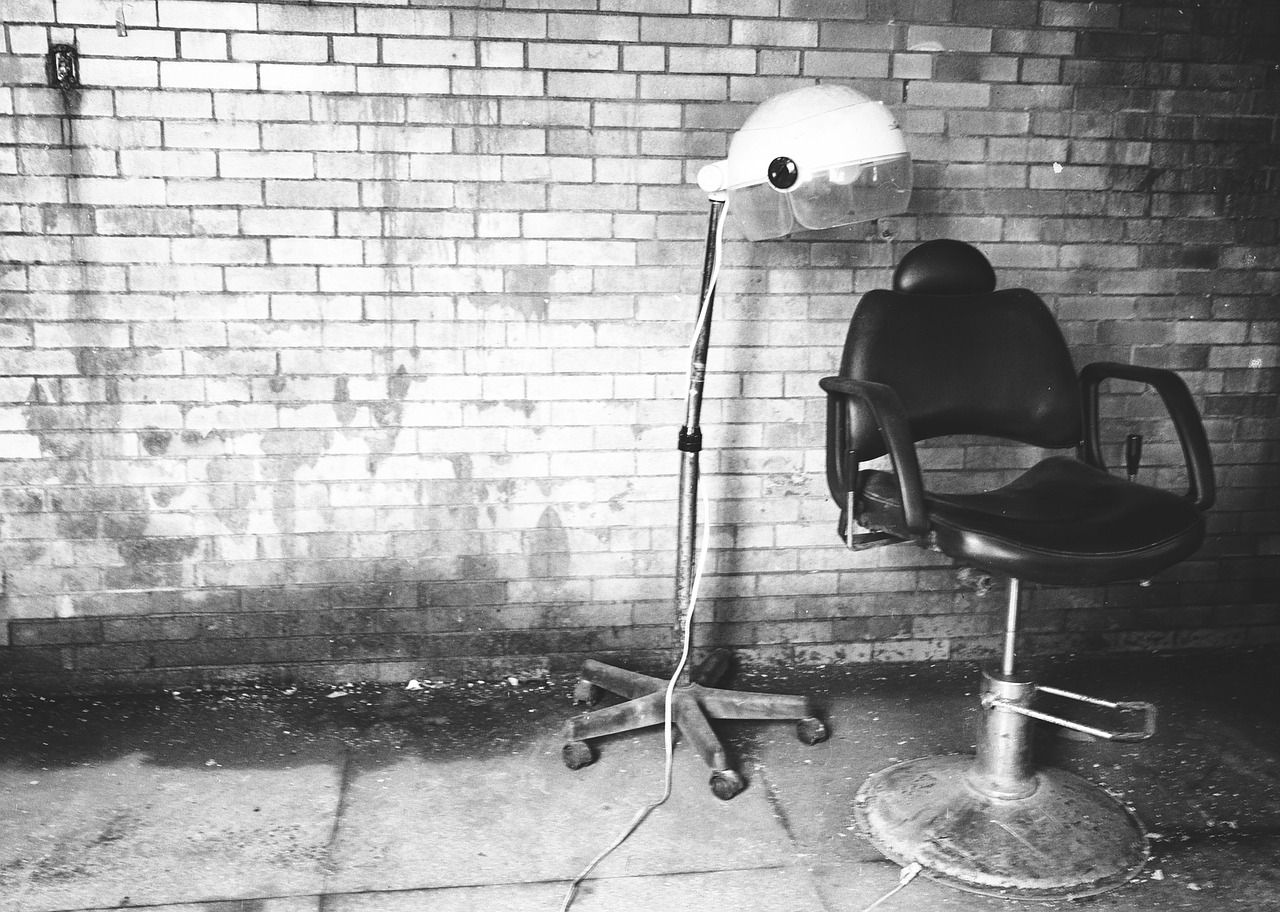
If you’re having a bad hair day, these follicle freaks of film might help you feel less alone.
Drexl Spivey, True Romance (1993)
Wikipedia describes modern wearing of dreadlocks as representing “ethnic pride (and/or)…a free, alternative or natural spirit.” But Oldman’s Drexl Spivey represents none of those things. His casual demeanor and low-talking, pimp swagger belies a truly violent, unhinged man. While appearing in only one scene, his glassy eyes, facial scarring, and dirty-blonde dreads stay with us for the duration.
Judge Doom aka Baron Von Rotten, Who Framed Roger Rabbit? (1988)
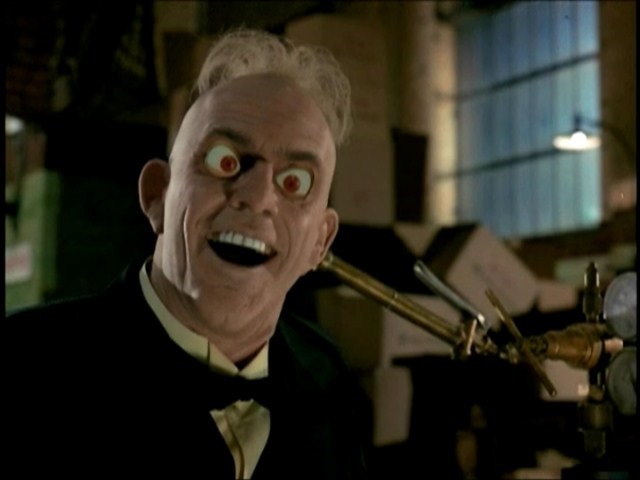
Throughout much of the film, we know Christopher Lloyd’s Judge Doom to be a bad guy. He’s a ruthless businessman who will destroy lives and raze cities to build his empire. He even has the patent on Dip, a type of liquid chemical eraser capable of killing the “Toons.” His appearance is carefully shrouded by a large, cape-like duster, black gloves, tinted glasses, and a fedora that shields his hoary skin tone. But during the film’s climax, it is revealed that Judge Doom is himself a toon, and the devastating violence he’s been perpetrating against the toon community is pure genocide. And that’s when shit really gets nanners. Because that little tuft of bleached blonde hair atop his otherwise shaved head, combined with spun-out cartoon eyes, is enough to make you wish you had a supply of Dip to throw at him. Or at least some Dep.*
Sy “The Photo Guy,” One Hour Photo (2002)
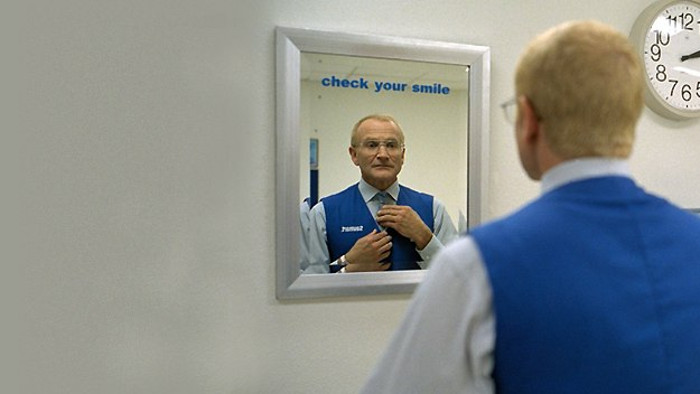
Oh, Robin Williams. Your boundless comedic energy can only be matched by your hauntingly subtle portrayals of deeply troubled characters. From Good Will Hunting to The Night Listener, you were riveting onscreen, forcing us to lean in closer to observe you. Sy “The Photo Guy” Parrish might be Williams’ most riveting depiction of a profoundly lonely, socially odd man who is employed at the photo center of a Big Box store. He is unremarkable in every way, even blending into the pale, impersonal florescence of his surroundings. But we knew that Sy had obsessions; and just like the other characters in the film, we felt both empathy and unease in his presence. But this is not a psychological write-up on an unassuming man who is slowly unraveling. This is a fucking countdown about creepy hair. And Sy “The Photo Guy,” your tidy, wispy, unnaturally blonde baby hair was straight weird.
Baby Jane Hudson, What Ever Happened to Baby Jane (1962)
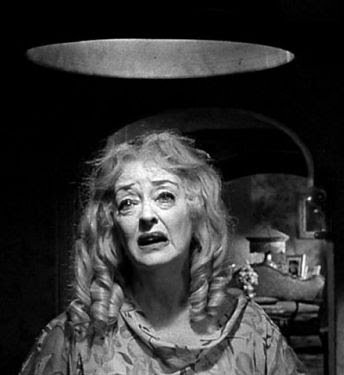
Aging, yet infantile child star with delusions of grandeur? Check. Sibling rivalry-turned abusive, unlawful imprisonment of wheelchair-bound sister? Check. Legendary screen divas Bette Davis and Joan Crawford, together at last? Check. Frizzed banana curls and outrageous vaudevillian dolly makeup? Check-plus! Need I really say more?
Samara Morgan, The Ring (2002)
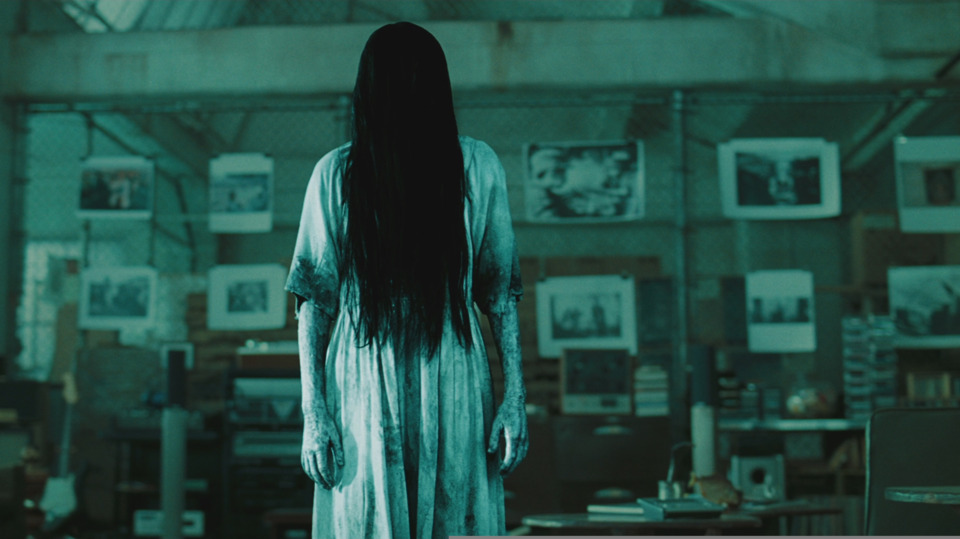
“Cousin Itt ain’t got nothin on me.”
Adapted from the 1998 film Ringu (originally a novel by Koji Suzuki), The Ring departs from the Japanese plot in several areas. But the major elements of horror remain: 1) You watch a creepy VHS of unknown origin; 2) Your face starts looking blurry in photographs; 3) One week later, you die a completely natural death by a long-haired girl who emerges from a static television. It’s all very reasonable. My motives for listing the American adaptation is not because I feel it’s superior to the original. But the hair and makeup effects of Daveigh Chase’s “Samara,” along with her unhuman gait and snarled stare raised the creep-o-meter to new heights. As a white girl with long brown hair, I still think of Samara when I emerge from the shower, matted hair dangling flatly in front of my face. I wonder how many lives could’ve been saved if someone just provided the poor girl with a tube of Moroccan oil.
George Harvey, The Lovely Bones (2009)
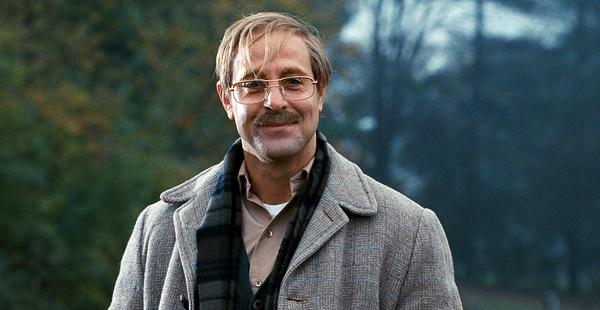
This choice is undoubtedly related to the strong feelings I experienced when first viewing the trailer for Peter Jackson’s adaptation of the Alice Sebold novel. I initially pondered whether this was a return to the atmosphere of earlier Jackson direction (most notably Heavenly Creatures). But then Stanley Tucci appeared. Or at least, someone who looked like he might be a weird Tucci relative from rural Pennsylvania. Without needing an iota of prior knowledge about the story, you know that he is a killer; the killer. It’s written all over him, along with his unassuming khakis, gold-rimmed, Dahmer-chic glasses, and combed-over blonde hair. Tucci was also outfitted with a flesh-toned mustache and striking blue contact lenses that seem almost nonhuman on him. In the dreary, late-fall scenes that take place outside, his hair is unkempt and windswept. This almost makes him seem more easy-going; or at least that’s maybe what the doomed Susie Salmon (Saoirse Ronan) thought when she encountered him. However, when he is indoors, his “true” self is evident in the preciseness of his hair. It is measured and meticulous, much like the dollhouses that he constructs. On a related note, I wonder where dollhouses rank in the Pedophilia for Dummies** guidebook?
Count Dracula/Vlad the Impaler, Bram Stoker’s Dracula (1992)

We’re not done with Gary Oldman just yet. There is so much hair action in Coppola’s incarnation of Dracula that I’m unsure where to begin. As Vlad the Impaler, Oldman had long and lustrous raven locks, fit for a Pantene Pro-V commercial. But don’t hate him because he’s beautiful. When he re-enters society in a late Victorian-era London, his attire reflects the period, while his hair gives a nod to a more Baroque style. We mustn’t ignore that Van Dyke beard, either. But the truly memorable, freaky-deakiest of hairstyles is that of a reclusive Dracula, meeting Jonathan Harker for the first time in his dark and towering castle. It’s a brilliant sequence, and the hair is more than just an elemental prop. It becomes a third scene partner, of sorts. I’ve always thought of the powdery double bouffant as being almost entomological in the front and serpentine in the back—which might be the weirdest description of a mullet that you’ll ever come across. Plus, it provides far more personality and artistic generosity than actual scene partner/living human Keanu Reeves.
Tom Waits and his raving hair also deserve an honorable mention as the faithfully insane Renfield.
Annie Wilkes, Misery (1990)
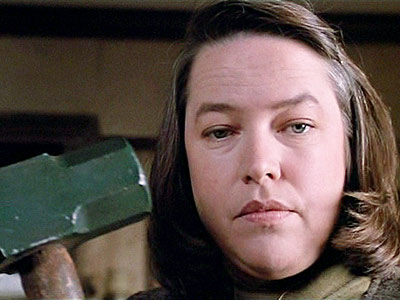
There is a theme in the works of Stephen King. He doesn’t just write about the darkness of the human psyche. He writes about writers who write about the darkness of the human psyche. Is that meta enough for you? His vocational anxieties are put to page in such works as The Shining, The Dark Half, and Secret Window (to name a few). But in Misery, James Caan’s Paul Sheldon is perhaps the least psychologically-burdened of King’s pseudo-fictional writers. That is, until he meets his rescuer-turned-captor, Annie Wilkes. To say that she is an enthusiastic consumer of Sheldon’s book series would be like saying Mount Everest is kind of a big hill. What starts as an irritating (but initially benign) idolatry, soon transforms into a Fangirl from Hell scenario. Poor hobbled Paul Sheldon does his very best to placate the increasingly irrational Annie, but she’s a woman who knows what she wants. And part of what she wants is to don a painfully plain hairdo that abruptly ends where her turtlenecks begin. Held together with a single bobby pin, she looks like the sort of psychotic yet pious Sunday school teacher that made you wish baby Jesus was never born.
Carl Stargher, The Cell (2000)
Where, oh where do I start…Vincent D’onofrio is a national treasure. As a character actor, he presents a level of commitment to the craft that earns him the common title of the “actor’s actor.” In Full Metal Jacket (1987), we witnessed the transformation from a clumsy, overweight boot camp trainee, to a menacing, rifle-wielding madman in one of the film’s most shocking scenes.* In The Cell, D’onofrio’s Carl Stargher is a serial killer with very particular tastes (e.g. putting women in a sealed tank while it slowly fills with water). Irreversibly comatose due to an accident, he still has a captive victim whose whereabouts are unknown. With time running out, psychologist Catherine Deane (played by Jennifer Lopez) is asked to venture into his twisted subconscious to find clues as to where his last victim is being held. What transpires is a visually-stunning, nightmarish glimpse into a surrealistic kingdom of madness, with Stargher at the realm. The costumes and set designs are fantastical; and the hair is a veritable smorgasbord of creepy. From bull horns, to a shaved head with a golden headpiece, D’onofrio becomes the gleefully deranged ruler of a hellish empire.
Michael Myers, Halloween (1978)
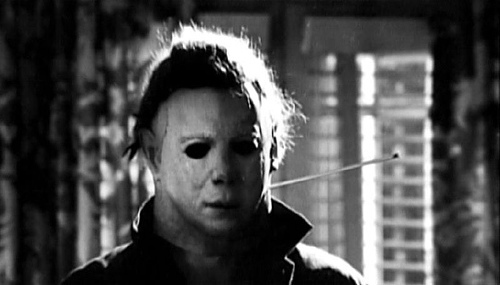
So we all know that this hairdo is just an extension of the infamous bleached William Shatner mask, used by the criminally insane Michael Myers for his unwelcome homecoming trip to Haddonfield. And if you’ve ever purchased a cheap synthetic wig from a Halloween store, you’re all too familiar with the dry texture and uneven tufts that sprout from the cap. It’s a truly ugly affair. This unmoving coif (complete with an unnatural hairline) became a part of Myers’ telltale silhouette, as blunt and startling as a shark fin slicing though the surface of the sea. But there are no sharks in Haddonfield, Illinois. Just knife-wielding, Shatner mask-wearing homicidal maniacs.
Zelda Goldman and Victor Pascow, Pet Sematary (1989)
Thie is a twofer. Pet Sematary did a lot in the way of horror education. It taught us to eternally question the correct spelling of “cemetery” (courtesy of Stephen King’s penchant for playfully taking the piss out of his audience). It taught us that Herman Munster believes that sometimes dead is better. It also taught us not to stand next to a bed when there’s a scalpel-wielding reanimated boy on the loose, who wants nothing more than to slice your Achilles tendon clean in half. Most notably, it taught us to LOOK AWAY during the Zelda scene. What in the entire fucks? That mousy, gingered bedhead compounded by her sallow complexion and contorted body. As a kid, I would’ve swiftly slid beneath the bed to get away from that image, if I wasn’t so certain Gage would be waiting for me under there.
And Victor Pascow, the dead jogger (portrayed by Brad Greenquist)…well that’s easier to get used to, since he becomes a fixture in the movie (much like Griffin Dunne’s American Werewolf in London character). But I still have the urge to say “Dude, you’ve got something in your hair.” Until I remember that it’s, in fact, a gaping head wound that he’s completely neglecting to acknowledge. And for that, he makes the list. You know what- so does Griffin Dunne, for that matter. Because it’s my list and I can do what I want with it.
Anton Chigurh, No Country for Old Men (2008)
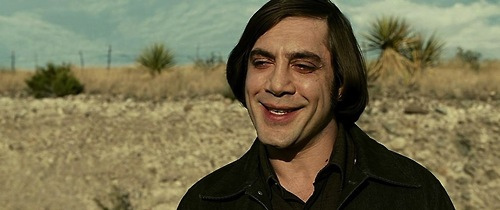
Javier Barden’s character was the main inspiration for this otherwise useless countdown. According to the verified Facebook page for No Country for Old Men***, Chigurh’s haircut was inspired by a photograph of a brothel patron in the late 1970s. I’m just speculating, but it’s possible that this man was forced to enlist the services of a brothel because of the haircut itself. The flat-ironed man-bob (complete with a deep side-parted bang) doesn’t exactly lend itself to sociability. In fact, it might be most stunning physical manifestation of an antisocial personality disorder that I’ve ever observed. Bardem’s quietly malignant depiction of Chigurh was so effective that it earned him the 2008 Oscar for Best Supporting Actor. But I doubt Vidal Sassoon would offer any awards for that ‘do.
* For you later millennials, Dep® was a hair gel popular in the late 80s/early 90s. It could often be located, inexplicably, in your Dad’s medicine cabinet.
**In terms of Pedophilia for Dummies, no such book exists…let’s hope.
***No Country for Old Men was originally a novel by Cormac McCarthy. And while Chigurh’s psychopathy was evident in the novel, mention of his hairstyle was not. Rather, it was the Coen Brothers’ proverbial “cherry on top” that brought visual villainy to a new level.


